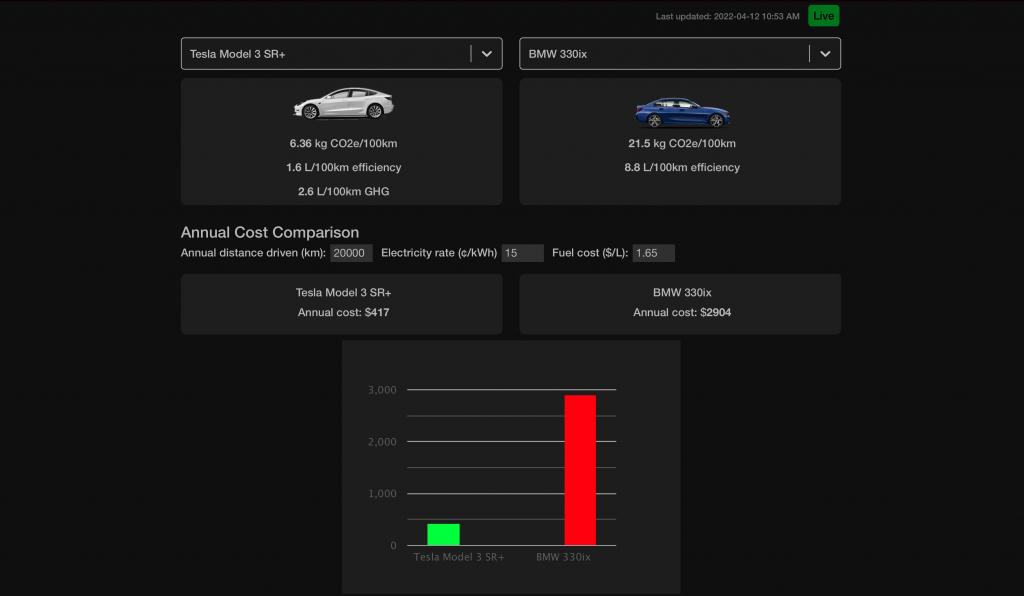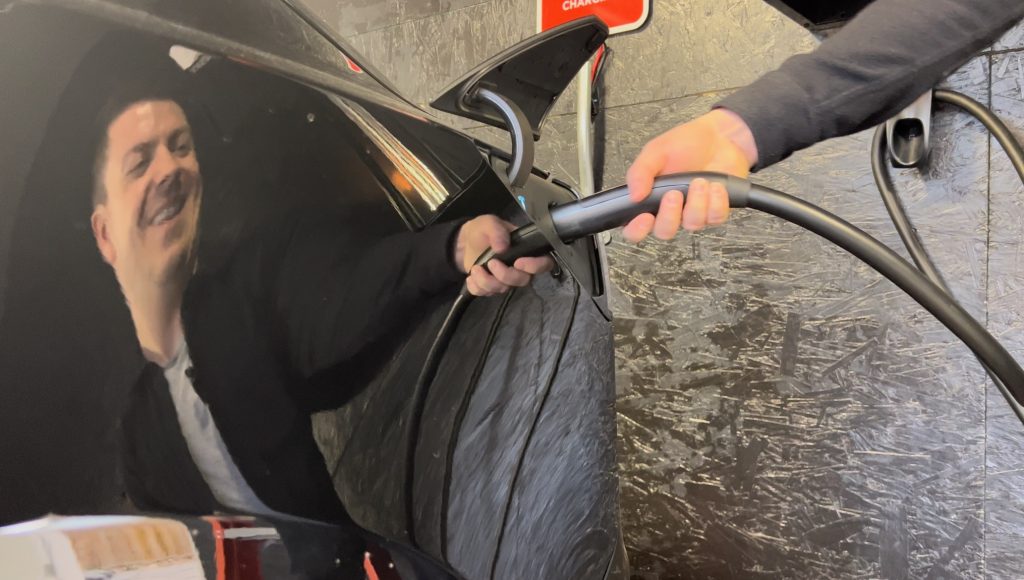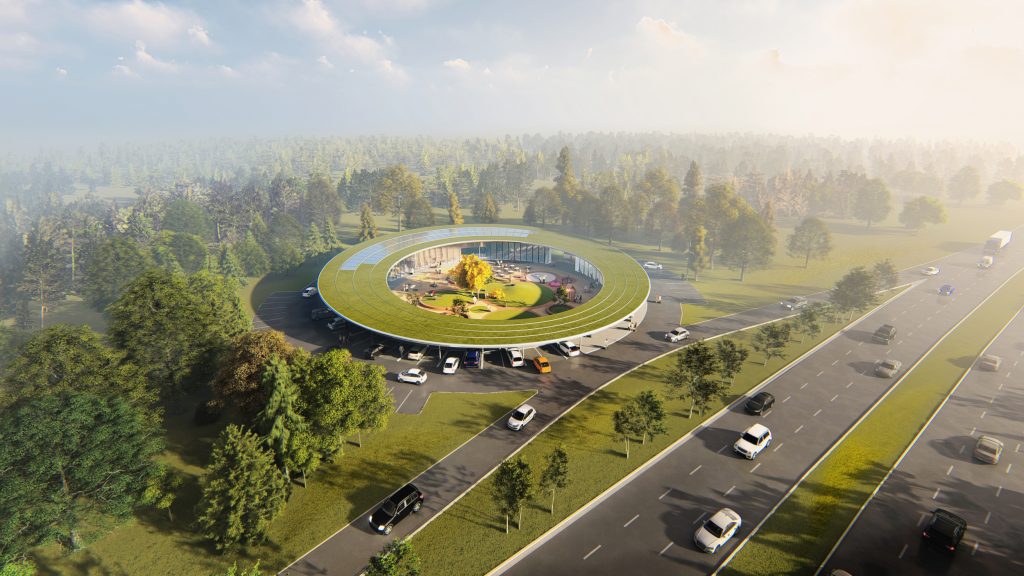By David Dodge, GreenEnergyFutures.ca
There is no point in driving an electric vehicle in Alberta because the grid is powered by fossil fuels. The Electric Vehicle Association of Alberta hears this all the time.
So they created an EV calculator to compare emissions and fuel costs in Canada.
The calculator takes a live feed from Alberta’s electricity grid that provides the precise breakdown by fuel source of where electricity is coming from.
When we visited William York Alberta was getting 20% of its electricity from wind, 9.2% from coal, and most of the rest from natural gas.

The calculator allows you to select an EV car and a gas-fueled car and compare emissions.
York selected a Tesla Model 3 EV, which is what he drives, and a BMW 330ix. It turns out that Tesla produces 5.72 kilograms of CO2 equivalent emissions per 100 kilometers and the BMW produces 21.5 kilograms per 100 kilometers. This means the gas-powered vehicle was producing 375% more emissions than the EV, even with Alberta’s predominantly fossil-fuel-powered grid.

EV versus Internal Combustion Fuel Costs
“Electricity is actually a lot cheaper than gasoline in the province of Alberta,” says York. So, he entered $0.15 per kilowatt-hour for the electricity price and $1.65 per liter for gas, and presto the calculator tells you it’s nearly seven times cheaper to fuel an electric vehicle.
The bottom line is an EV in Alberta produces four times fewer emissions and costs seven times less to drive in terms of fuel costs. And remember Alberta has one of the dirtiest grids in Canada.
The calculator works for any province in Canada. When York switches the calculator to British Columbia where 90% of the electricity comes from hydropower the emissions discrepancy gets even better. In B.C. a gas car produces 10 times more emissions than an EV.
Even in Alberta, grid emissions have trended down, especially after the NDP Government accelerated the phase-out of coal-fired power in 2015. As of 2022, only about 8% of electricity comes from coal and by 2023 that number will be zero.
Like A Bottle of Fine Wine – EVs Get Better With Time
This accelerated coal phase-out has reduced emissions by 20 megatonnes which is the equivalent of taking six million gas-powered cars off the road, one of the largest single emissions reduction actions in Canada.
York says he has seen the impact of a cleaner grid in the calculator over time. “The emissions savings by going to an electric vehicle have just continued to grow.”
“Owning an electric vehicle from a charging station perspective is like a bottle of fine wine. It just gets better over time,” EV owner Ed Ma told Green Energy Futures in our series called Life With An EV.
As you might expect William York drives an EV. He purchased a Tesla Model 3 long-range vehicle in 2018 and he says he saves about $2,000 a year in fuel costs.
EV Charging – More High Speed Charging Needed

Like most EV drivers York charges his car at home in his garage with a Tesla Level II charger, so he leaves home fully charged every day.
“I do use public charging in the city, but what I always say is that I’ve never had to use public charging in the city,” says York.
What’s needed he says is an expanded high-speed charging network out of town, especially in Alberta’s north. And although there are high-speed chargers to the west and south of his home city of Edmonton, Alberta, those networks also need to be expanded greatly to accommodate growth in EV sales.
Electric Autonomy Canada recently hosted a design competition to find the ultimate EV electric fuelling station of the future and the results were pretty inspiring.
York says he’s traveled to places like Seattle and had no problems keeping his vehicle charged up and on the road.

He uses websites such as plugshare.com and another called “a better route planner” to map out high-speed charging while traveling.
And of course, since York drives a Tesla his navigation system will not only plan out navigation for a trip, it will also plan out charging stops at high-speed chargers along the way.
As for living in Alberta with an EV, York says “I really think we’re going to get to a point where during certain times of the day it’s as clean to drive an electric vehicle on Alberta’s grid, as it is in a province like British Columbia.”
With Alberta’s current solar and wind power boom, it looks like this just might be true.





